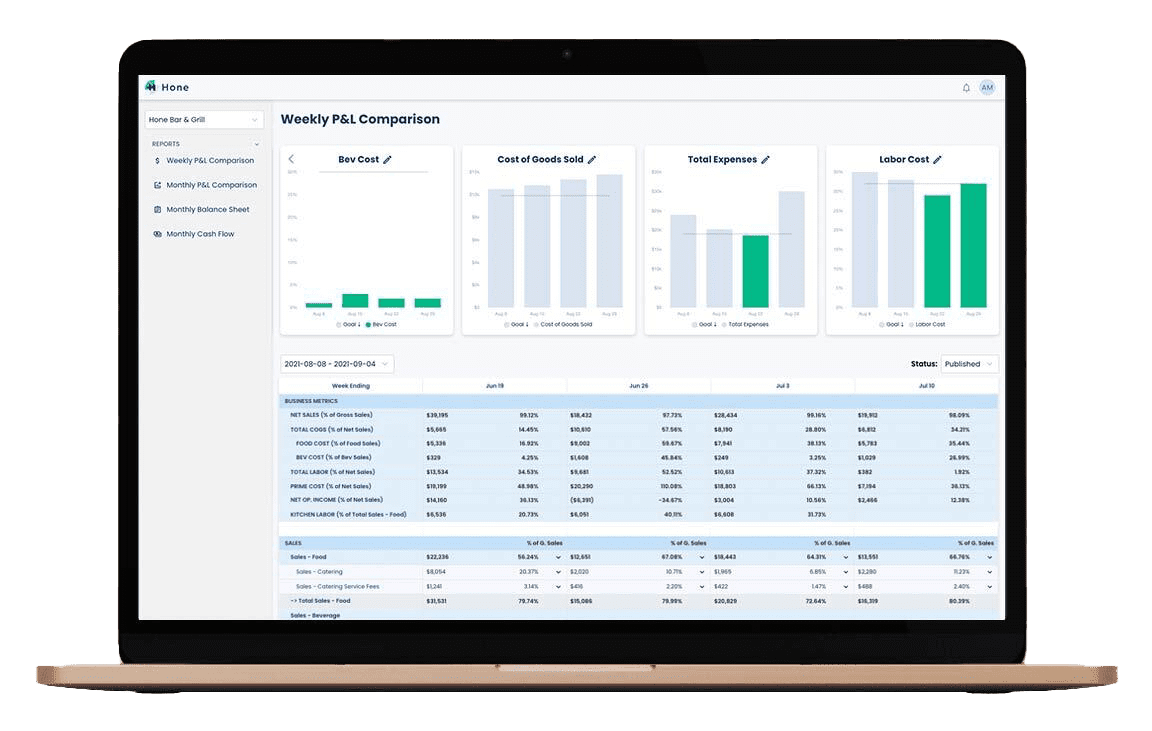Understanding and managing your restaurant’s profit margins is essential for long-term success in the industry. Understanding what goes into your profit margin, provides valuable insight into the financial health of your business, and can guide decision-making to increase these margins. In this guide, we will explore the average restaurant profit margins, how to determine your margins, strategies to improve them, and the role of the right software in maximizing profits.

What Is the Average Restaurant Profit Margin?
Having a sense for the average restaurant profit margin can be helpful when benchmarking your performance. While profit margins can vary depending on various factors such as restaurant type, location, and concept, it’s crucial to have a general understanding of the numbers.
According to industry sources like Lightspeed and Toast, the average restaurant profit margin typically falls between 3% to 5% of total sales. However, it’s important to note that this range is merely a reference point, and actual profit margins can differ significantly based on individual circumstances.
How to Assess the Health of Your Restaurant, Starting with the Your Profit Margin:
To assess the health of your restaurant through it’s profit margins, you need to gather and analyze relevant financial data. By examining key metrics and ratios, you can gain insights into your profitability and identify areas for improvement.
Begin by calculating your gross profit margin, which is the percentage of revenue remaining after deducting the cost of goods sold (COGS). This figure indicates the effectiveness of your menu pricing alongside your efficiency in purchasing and inventory management. Additionally, analyze your operating expenses as a percentage of sales to evaluate your overhead costs and identify potential areas for cost reduction.
Some useful targets:
- Total COGS (= Food Cost + Bev Cost) should be around 30% of Net Sales
- Food cost should be around ~30% Food Sales
- Beverage cost should be around ~30% of Beverage Sales
- Trade off Food and Bev pricing and costs against each other to achieve or attempt to beat that 30% target.
- Labor costs should be around 30% though this is proving very hard these days due to labor shortages
- Occupancy should be between 5-10%
By comparing these figures to industry benchmarks and historical data, you can gauge your restaurant’s profitability and make informed decisions about future strategies.

How to Improve Your Restaurant Profit Margins:
Boosting your restaurant’s profit margins requires a multi-faceted approach that encompasses various aspects of your business operations. Here are some strategies to consider:
Menu Engineering:
Analyze your menu items and their profitability. Focus on promoting high-margin items and consider removing or reengineering low-margin ones. Additionally, optimize portion sizes, ingredient costs, and menu pricing to strike the right balance between profitability and customer satisfaction. It’s important to track pricing of the ~10 ingredients that you spend the most money on. You should also track the corresponding plate-costs for dishes that use those ingredients.
Inventory Management:
Implement efficient inventory management practices to minimize waste, spoilage, and overstocking, especially for your top 10 ingredients. Regularly monitor inventory levels, negotiate favorable supplier agreements, and identify opportunities for ingredient substitutions or sourcing alternatives.
Labor Optimization:
Review your labor costs and scheduling practices to ensure optimal staffing levels during peak and off-peak hours. Train your staff to work efficiently and consider cross-training employees to maximize productivity.
Operational Efficiency:
Streamline your processes and workflows to reduce operational costs and improve productivity. Evaluate your equipment, technology, and workflow design to identify areas where automation or optimization can yield cost savings.
Marketing and Promotions:
Develop targeted marketing campaigns and promotions to attract new customers and encourage repeat business. Leverage digital marketing channels, social media platforms, and customer loyalty programs to increase your restaurant’s visibility and drive revenue.

Ready to Maximize Your Profits With the Right Software?
Investing in the right software can significantly enhance your ability to manage and maximize your restaurant’s profits. With advanced POS systems and analytics tools, you can gain real-time insights into sales, inventory, and customer data. These insights enable you to make data-driven decisions, optimize operations, and identify areas for improvement.
At Hone, we offer a comprehensive finance and operations software solution designed specifically for the restaurant industry. Our software turns your bookkeeping data into business metrics and custom reporting to help you and your team be data-driven. Request a demo today to see how our software can help you streamline your operations, increase efficiency, and boost your profit margins.


